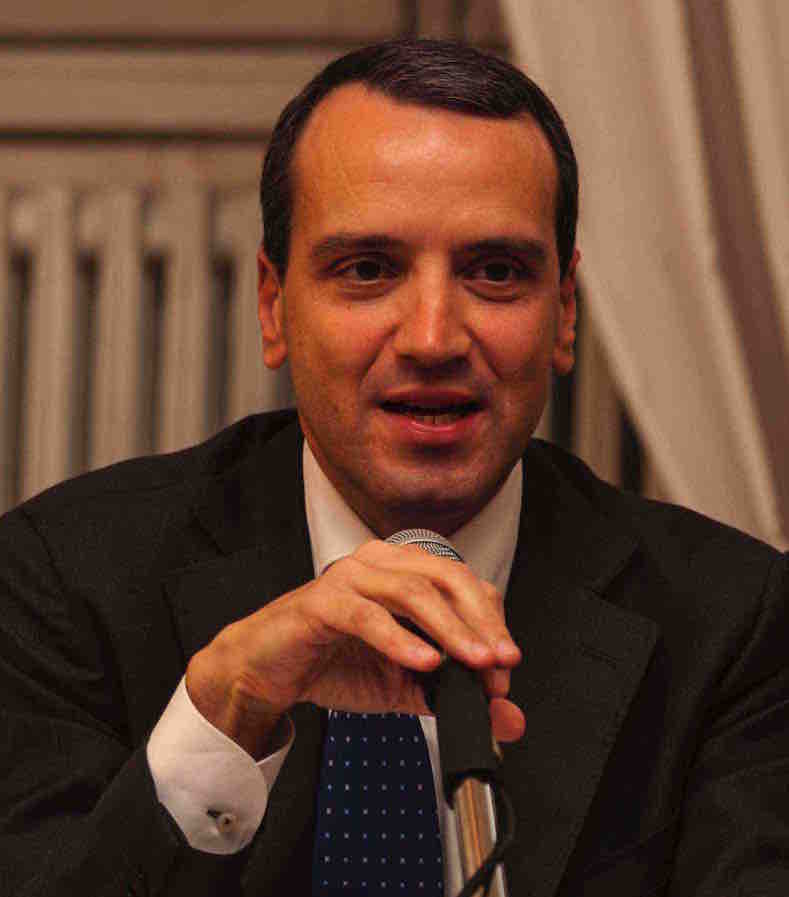Studying at the University of Verona
Here you can find information on the organisational aspects of the Programme, lecture timetables, learning activities and useful contact details for your time at the University, from enrolment to graduation.
Academic calendar
The academic calendar shows the deadlines and scheduled events that are relevant to students, teaching and technical-administrative staff of the University. Public holidays and University closures are also indicated. The academic year normally begins on 1 October each year and ends on 30 September of the following year.
Course calendar
The Academic Calendar sets out the degree programme lecture and exam timetables, as well as the relevant university closure dates..
| Period | From | To |
|---|---|---|
| 1° periodo di lezioni | Oct 2, 2017 | Dec 15, 2017 |
| Periodo riservato ad eventuali recuperi di lezioni - dicembre 2017 | Dec 16, 2017 | Dec 19, 2017 |
| 2° periodo di lezioni - febbraio/marzo 2018 | Feb 12, 2018 | Mar 26, 2018 |
| 2° periodo di lezioni - aprile/maggio 2018 | Apr 4, 2018 | May 9, 2018 |
| Periodo riservato ad eventuali recuperi di lezioni - maggio 2018 | May 10, 2018 | May 11, 2018 |
| Session | From | To |
|---|---|---|
| Sessione straordinaria - studenti f.c. - dicembre 2017 | Dec 20, 2017 | Dec 23, 2017 |
| Sessione invernale - 1° appello | Jan 9, 2018 | Jan 17, 2018 |
| Sessione invernale - 2° appello | Jan 31, 2018 | Feb 8, 2018 |
| Sessione straordinaria - studenti f.c. - marzo 2018 | Mar 27, 2018 | Mar 29, 2018 |
| Sessione estiva - 1° appello | May 12, 2018 | May 23, 2018 |
| Sessione estiva - 2° appello | Jun 8, 2018 | Jun 18, 2018 |
| Sessione estiva - 3° appello | Jul 5, 2018 | Jul 14, 2018 |
| Sessione autunnale - 1° appello | Aug 27, 2018 | Sep 5, 2018 |
| Sessione autunnale - 2° appello | Sep 20, 2018 | Sep 29, 2018 |
| Session | From | To |
|---|---|---|
| Termine presentazione tesi di laurea - Sessione ottobre 2017 | Sep 22, 2017 | Sep 22, 2017 |
| Sessione autunnale - ottobre 2017 | Oct 23, 2017 | Oct 24, 2017 |
| Termine presentazione tesi di laurea - Sessione invernale | Jan 10, 2018 | Jan 10, 2018 |
| Sessione invernale | Feb 9, 2018 | Feb 9, 2018 |
| Termine presentazione tesi di laurea - Sessione marzo 2018 | Feb 16, 2018 | Feb 16, 2018 |
| Sessione invernale - marzo 2018 | Mar 15, 2018 | Mar 19, 2018 |
| Termine presentazione tesi di laurea - Sessione estiva | May 23, 2018 | May 23, 2018 |
| Sessione estiva | Jun 26, 2018 | Jun 27, 2018 |
| Period | From | To |
|---|---|---|
| All Saints Day | Nov 1, 2017 | Nov 1, 2017 |
| Immaculate Conception | Dec 8, 2017 | Dec 8, 2017 |
| Vacanze di Natale | Dec 24, 2017 | Jan 6, 2018 |
| Easter break | Mar 30, 2018 | Apr 3, 2018 |
| Liberation Day | Apr 25, 2018 | Apr 25, 2018 |
| Festa del Lavoro | May 1, 2018 | May 1, 2018 |
| Patron Saint Day | May 21, 2018 | May 21, 2018 |
| Republic Day | Jun 2, 2018 | Jun 2, 2018 |
| Vacanze estive | Jul 15, 2018 | Aug 26, 2018 |
Exam calendar
Exam dates and rounds are managed by the relevant Law Teaching and Student Services Unit.
To view all the exam sessions available, please use the Exam dashboard on ESSE3.
If you forgot your login details or have problems logging in, please contact the relevant IT HelpDesk, or check the login details recovery web page.
Should you have any doubts or questions, please check the Enrollment FAQs
Academic staff
 giovanni.alberti@univr.it
giovanni.alberti@univr.it
 mariacaterina.baruffi@univr.it
mariacaterina.baruffi@univr.it

Dalla Massara Tommaso
 tommaso.dallamassara@univr.it
tommaso.dallamassara@univr.it
 +39 045 8028810
+39 045 8028810
 roberto.flor@univr.it
roberto.flor@univr.it
Lehmann Michael
 rita.maggi@univr.it
rita.maggi@univr.it
 martina.menon@univr.it
martina.menon@univr.it

Patrono Paolo
 paolo.patrono@univr.it
paolo.patrono@univr.it
 +39 045 8028813
+39 045 8028813

Peluso Eugenio
 eugenio.peluso@univr.it
eugenio.peluso@univr.it
 045 8028104
045 8028104
 lorenzo.salvatore@univr.it
lorenzo.salvatore@univr.it
Strano Silvana
 silvana.stranoligato@univr.it
silvana.stranoligato@univr.it
 +39 045 8028856
+39 045 8028856
 claudio.tomazzoli@univr.it
claudio.tomazzoli@univr.it
 marcella.veronesi@univr.it
marcella.veronesi@univr.it
Study Plan
The Study Plan includes all modules, teaching and learning activities that each student will need to undertake during their time at the University.
Please select your Study Plan based on your enrollment year.
1° Year
| Modules | Credits | TAF | SSD |
|---|
Principles of economics
Roman Law Institutions
History of Medieval and Modern Law
2° Year activated in the A.Y. 2018/2019
| Modules | Credits | TAF | SSD |
|---|
One course to be chosen among the followingOne course to be chosen among the following3° Year activated in the A.Y. 2019/2020
| Modules | Credits | TAF | SSD |
|---|
4° Year activated in the A.Y. 2020/2021
| Modules | Credits | TAF | SSD |
|---|
One course to be chosen among the following5° Year activated in the A.Y. 2021/2022
| Modules | Credits | TAF | SSD |
|---|
Five courses to be chosen among the following| Modules | Credits | TAF | SSD |
|---|
Principles of economics
Roman Law Institutions
History of Medieval and Modern Law
| Modules | Credits | TAF | SSD |
|---|
One course to be chosen among the followingOne course to be chosen among the following| Modules | Credits | TAF | SSD |
|---|
| Modules | Credits | TAF | SSD |
|---|
One course to be chosen among the following| Modules | Credits | TAF | SSD |
|---|
Five courses to be chosen among the followingLegend | Type of training activity (TTA)
TAF (Type of Educational Activity) All courses and activities are classified into different types of educational activities, indicated by a letter.
Roman Law Institutions [Matricole pari] (2017/2018)
Teaching code
4S00317
Teacher
Coordinator
Credits
9
Language
Italian
Scientific Disciplinary Sector (SSD)
IUS/18 - ROMAN AND ANCIENT LAW
Period
2° periodo di lezioni - aprile/maggio 2018, 2° periodo di lezioni - febbraio/marzo 2018
Learning outcomes
The course aims at providing the students with the main categories and the basic terminology of Roman private law, as well as at enlightening the Roman origins of several institutions and many forms of legal reasoning that nowadays characterize the current European private law. It will indeed deal with absolute and relative rights, ownership and rights in rem, obligation, legal act, contract, tort, successions, etc. The course will focus on Roman civil procedure, and particular attention will be given to the dialectics existing between ‘substantive’ and ‘remedial’ approaches.
Program
Preliminary and preparatory exams: not required.
General part
- Sources of Roman Law (the study is recommended on A. BURDESE, Manuale di diritto privato romano4, Torino, 1993).
- Private legal procedure.
- Individuals and family (this part can be studied - in an abridged version - also in Diritto privato romano2, a cura di A. Schiavone, Torino, 2010).
- Facts, acts and legal act.
- Obligations and contract law.
- Rights in rem.
- Donations.
- Inheritance law.
Special part: L. GAROFALO, Fondamenti e svolgimenti della scienza giuridica. Nuovi saggi, Torino, 2015
The program provides the possibility of choosing, alternatively, between two groups of essays:
I) Homo liber e homo sacer: due archetipi dell’appartenenza.
Sull’eccezione di dolo generale.
II) Principi e ordinamento romano: una riflessione sulle orme di Fritz Schulz.
L’arbitraggio sul prezzo.
Each student is required to study the special part of the program planned for his/her first academic year of attendance, with the possibility, at his/her own free choice, to opt for the current academic year program.
Considering that the objective of the course is to provide an institutional preparation, the teaching method aims at encouraging legal reasoning through lectures that expose institutions by taking into account their logical and systematic correlations. In line with the expected results, the approach to some practical cases will not be neglected as a further outcome. In this regard, consider the course of training in view of the 'Moot court competition. Roman law and civil law tradition': it is a subsidiary teaching activity carried out within the frame of the project 'Laboratorio Romanistico Gardesano', on the basis of an agreement signed in 2015 by the Universities of Verona, Brescia, Trento and Milano 'Statale'. This activity is directed to select the members of the Verona team that will take part at the competition (held each year in June at Palazzo Feltrinelli – Gargnano, BS). It is anyhow a course open to any interested student and it is particularly recommended to the students attending the course of Institutions of Roman Law, as to improve their ability to apply the legal reasoning to the concrete case.
Any conference and /or seminar of interest, as well as any tutoring and / or optional laboratory activity relevant for the course will be communicated during the class hours.
Students who are interested in studying some parts of the program on textbooks of Roman law written in German, French or English are kindly asked to contact the Professor during the class hours.
ERASMUS students are kindly asked to contact the Professor at the beginning of the course to define the program: the exam will consist in the discussion of an essay, written in Italian or English, where the student will deepen a specific topic agreed with the Professor.
| Author | Title | Publishing house | Year | ISBN | Notes |
|---|---|---|---|---|---|
| L. Garofalo | Fondamenti e svolgimenti della scienza giuridica. Nuovi saggi | Giappichelli, Torino | 2015 | ||
| M. Marrone | Istituzioni di diritto romano | Palumbo, Palermo | 2006 | ||
| A. Burdese | Manuale di diritto privato romano (Edizione 4) | Utet, Torino | 1993 |
Examination Methods
Objectives of the examination
Assessing the knowledge of the substantive and procedural institutions of private Roman law.
Contents and methods of carrying out the assessment tests
The examination will take place for all both in written form limited to the general part (with the submission of five open questions to which the student must answer in the total maximum time of twenty-five minutes), and by interview, in which, after a brief illustration and commentary on the written test, the knowledge of the general part as well as of the special part will be further examined.
Valuation criteria and explanation of the final mark
The final evaluation is expressed in thirtieths (30/30). The evaluation between 18 and 20 corresponds to a sufficient, yet low and basic, knowledge of the contents; the evaluation between 20 and 25 shows a more than sufficient / discreet knowledge of the contents; the evaluation between 25 and 29 shows a good or very good knowledge of the contents together with commendable critical skills. The evaluation between 30 and 30 cum laude corresponds to a very good or excellent knowledge together with high critical, analytical and connection skills. The study of the special part will also be taken into account in the evaluation of the critical capacity.
Language used in the final exam: Italian
Teaching materials e documents
-
 programma e testi consigliati (ita)
(msword, it, 35 KB, 24/07/17)
programma e testi consigliati (ita)
(msword, it, 35 KB, 24/07/17)
Type D and Type F activities
Le attività che consentono l’acquisizione dei crediti riservati alle attività formative a libera scelta dello studente (TAF D) sono le seguenti:
• Un insegnamento previsto nell’elenco delle attività formative (TAF D) allegato al piano didattico del corso di laurea Magistrale in Giurisprudenza;
• Un insegnamento attivato nei Corsi di studi afferenti al Collegio di Giurisprudenza;
• Un laboratorio didattico attivato nei Corsi di studi afferenti al Collegio di Giurisprudenza;
• Un laboratorio didattico attivato nei Corsi di studi afferenti al Dipartimento di Scienze Giuridiche;
• Un insegnamento previsto dall’Offerta Formativa di Ateneo, non impartito nell’ambito dei corsi di studi afferenti al Collegio di Giurisprudenza: il riconoscimento dei crediti acquisiti sarà subordinato alla preventiva presentazione di coerenti programmi formativi valutati dalla Commissione istruttoria per la didattica e approvati dal Collegio didattico.
• Attività formative organizzate dai singoli docenti del Collegio di Giurisprudenza o del Dipartimento di Scienze Giuridiche: previa approvazione del Collegio ad esse verrà attribuito, dopo un’apposita verifica, un credito per ogni 6 ore di frequenza obbligatoria;
• Attività formative che implicano la partecipazione a convegni o seminari organizzati sotto il “logo” del Dipartimento di Scienze Giuridiche o dell’Ateneo: devono essere preventivamente approvate dal Collegio di Giurisprudenza indicando un docente di riferimento del Collegio di Giurisprudenza ovvero del Dipartimento di Scienze Giuridiche. Un credito per ogni giornata di convegno o di seminario si acquisisce dopo apposita verifica che dimostri l’avvenuta fruizione culturale del tema del convegno o del seminario.
Le attività che consentono l’acquisizione dei crediti riservati alle ulteriori attività formative (TAF F) sono le seguenti:
• Informatica (3 cfu)
Al link https://www.univr.it/it/i-nostri-servizi/segreterie-studenti/giurisprudenza#categdoc_7103 la modulistica per l'inserimento di attività non selezionabili in autonomia dallo studente in sede di compilazione del piano degli studi.
| years | Modules | TAF | Teacher |
|---|---|---|---|
| 4° 5° | International arbitration law | D |
Annalisa Ciampi
(Coordinator)
|
| 4° 5° | Civil enforcement law | D |
Alberto Maria Tedoldi
(Coordinator)
|
| 4° 5° | Family Law | D |
Alessandra Cordiano
(Coordinator)
|
| 4° 5° | Ecclesiastical law | D |
Giuseppe Comotti
(Coordinator)
|
| 4° 5° | Economics, financial statement and control of Italian healthcare and social care organizations | D |
Paolo Roffia
(Coordinator)
|
| 4° 5° | Safety and social security | D |
Sylvain Giovanni Nadalet
|
| years | Modules | TAF | Teacher | |
|---|---|---|---|---|
| 5° | Sociology of law | D |
Daniele Velo Dalbrenta
(Coordinator)
|
|
| 4° 5° | Banking law | D |
Giovanni Meruzzi
(Coordinator)
|
|
| 4° 5° | Safe and security law | D |
Marco Peruzzi
|
|
| 4° 5° | CRISIS AND INSOLVENCY PROCEEDINGS LAW | D |
Alberto Maria Tedoldi
(Coordinator)
|
|
| 4° 5° | Company Economics | D |
Chiara Leardini
(Coordinator)
|
|
| 4° 5° | International criminal law | D |
Lorenzo Picotti
(Coordinator)
|
|
| 4° 5° | Juvenile Law | D |
Silvana Strano
(Coordinator)
|
|
| 4° 5° | Legal Medicine | D |
Domenico De Leo
(Coordinator)
|
|
| years | Modules | TAF | Teacher | |
|---|---|---|---|---|
| 5° | Sociology of law | D |
Daniele Velo Dalbrenta
(Coordinator)
|
|
| 4° 5° | Banking law | D |
Giovanni Meruzzi
(Coordinator)
|
|
| 4° 5° | Safe and security law | D |
Marco Peruzzi
|
|
| 4° 5° | CRISIS AND INSOLVENCY PROCEEDINGS LAW | D |
Alberto Maria Tedoldi
(Coordinator)
|
|
| 4° 5° | Company Economics | D |
Chiara Leardini
(Coordinator)
|
|
| 4° 5° | International criminal law | D |
Lorenzo Picotti
(Coordinator)
|
|
| 4° 5° | Juvenile Law | D |
Silvana Strano
(Coordinator)
|
|
| 4° 5° | Legal Medicine | D |
Domenico De Leo
(Coordinator)
|
|
Career prospects
Module/Programme news
News for students
There you will find information, resources and services useful during your time at the University (Student’s exam record, your study plan on ESSE3, Distance Learning courses, university email account, office forms, administrative procedures, etc.). You can log into MyUnivr with your GIA login details: only in this way will you be able to receive notification of all the notices from your teachers and your secretariat via email and soon also via the Univr app.
Language skills
Graduation
Internships
Internships are aimed at enabling students to gain direct knowledge of the world of work and to acquire specific professional skills.
Internships are carried out under the responsibility of an individual lecturer, and can be carried out in professional firms, public administration bodies and companies recognised by the University of Verona.
Any CFU credits gained by doing internships will be recognised and recorded by the University in accordance with the relevant University regulations in force (Regolamento d’Ateneo per il riconoscimento dei crediti maturati negli stage universitari).
For further information on internships, please go to: https://www.univr.it/it/i-nostri-servizi/stage-e-tirocini.














































